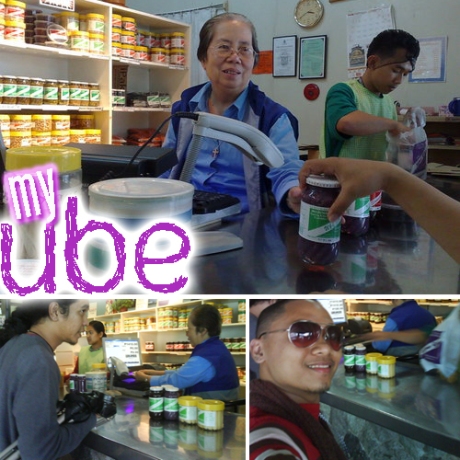> anG purpLe ng uBe niLa
Author: aLmich
Halayang ube has long been one of my favorites for Christmas or New Year’s celebration. Even if that meant using fork to grind it or to brave the storm, I will do it. I was just captivated by how perfectly Good Shepherd’s are created and cooked. The same curiosity prompted me to ask one nun about it.
My mother was born in Capiz and summered in Mindoro and she had a pretty good handle on ube jam or halaya, whichever you prefer. And our ube jam was always a tad less purple than anything we purchased in a grocery, ate in a restaurant as part of a dessert, etc. In fact, I always thought our jam needed a tan. We even started on a quest to make an ube jam that not only tasted good, possessed a smooth and light texture [mind you, some prefer solid bits in it] and had a vibrant color… After trying several types of ube [from Bohol, Batangas, Baguio, rounded, longish, humongous, smallish] we began to despair as nearly every one yielded a sallow looking jam. So finally, we tried adding just a touch of purple food coloring [the good stuff that looks like syrup, not the watery grocery stuff] and voila! perfection achieved… so what’s the point? The point is this… do I really believe the nuns at Good Shepherd aren’t using artificial food coloring of some sort? And yeah, one has even defensively told me “depende kse yan sa ube, tingnan mo di naman lahat dito pare pareho kulay” the last time I went there.
Is this really a big deal? Do I need to have the brilliantly purple ube jam I purchased at Good Shepherd analyzed at a lab to determine if artificial food coloring was added? Even though it emphatically states in bold letters on the label: “NO ARTIFICIAL COLOR ADDED.” Have I just missed out on some key process that retains the color better? If you are to analyze this dilemma thoroughly it boils down to this: type of ube [some are purpler than others], how you cook it [boiled vs. baked, perhaps?], peeled vs. unpeeled [to reduce bleed to water], manner of mashing? [by hand, food mill, purifier of some sort], proportion of milk [cow, carabao, milk vs. cream, evaporated, condensed], butter, sugar [can’t imagine they use anything but white granulated sugar] and stirring method. The only variation that I haven’t tried is unpeeled and baked before putting it through a rice mill. So I am truly befuddled by the great color of most commercial ube unless they use food color and the nuns say they don’t… Think they are being clever, boiling down the natural dye of the ube until they create a completely natural not artificial purple food color?
Our Yaya tried to make ube jam Cebu style which meant some condensed milk added. She boiled pre-peeled ube [therefore maximum bleed], used a food mill , then added sugar, milk, butter and ended up with the pallid jam. The nice purple jam is from Good Shepherd. Not only is the latter more purple, it was smoother and less dense. We made a jam last year without condensed milk and added a touch of purple food coloring and it was nearly as appetizing as the Good Shepherd version. So unless palengke readers have some good explanation why I keep getting pale ube jam then I have to believe that most commercially made ube jams do in fact use artificial coloring and consumers have just become so used to seeing this “idealized” ube color or find it less appetizing when it is pale [think ube ice cream in pale lavender rather than deep purple]… What do you think?
Halukay ube na!!!



 This Blog is an outlet for the random thoughts of an amateur opinionator.
What's an opinionator?
An opinionator is somebody who has power without responsibility, and the ability to spout off on any subject without worrying too much about the consequences of what comes out of the mouth. All you need is an opinion and the opportunity to voice it.
TV is full of professional opinionators. The internet gives the amateur his chance.
This Blog is an outlet for the random thoughts of an amateur opinionator.
What's an opinionator?
An opinionator is somebody who has power without responsibility, and the ability to spout off on any subject without worrying too much about the consequences of what comes out of the mouth. All you need is an opinion and the opportunity to voice it.
TV is full of professional opinionators. The internet gives the amateur his chance.

